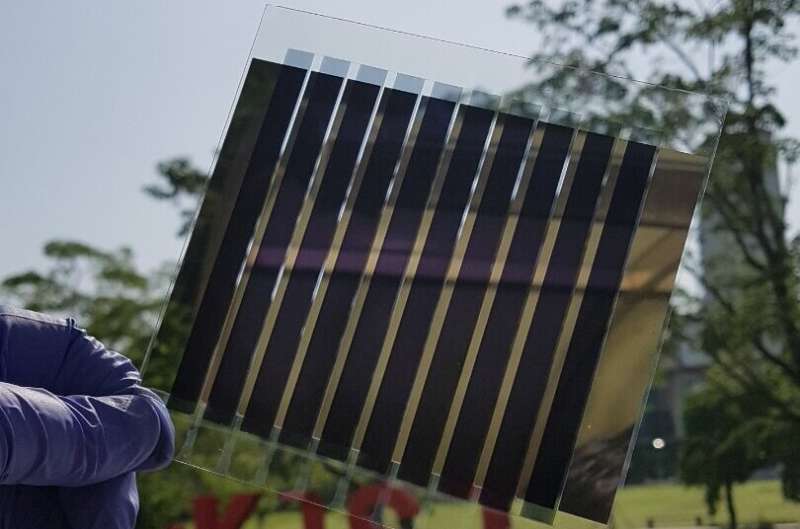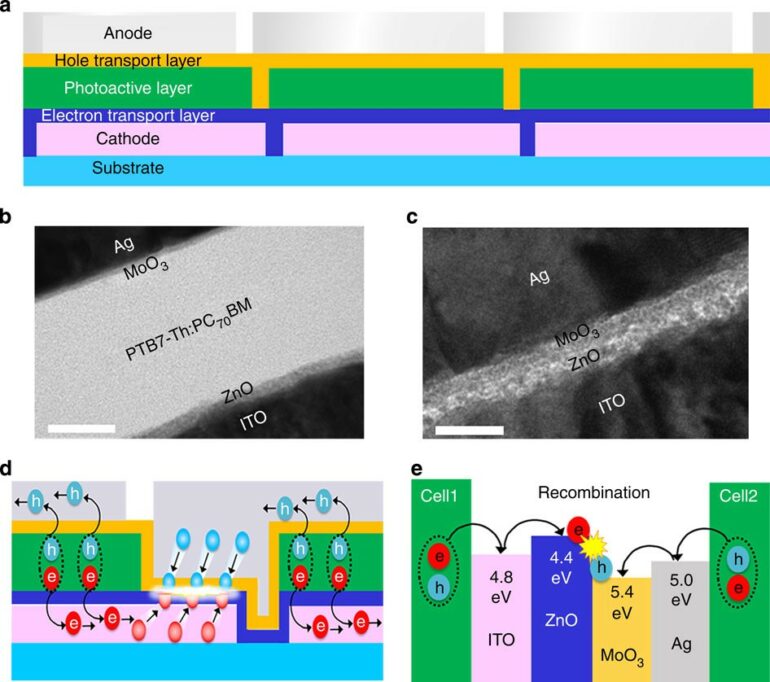Solar cell technology is a prominent clean energy source. In particular, organic solar cells, part of the third generation of solar cells, are gaining attention as a core technology for urban solar ray energy generation as they can be printed and applied to exterior walls or glass windows of buildings. However, the photoactive area that absorbs sunlight and converts it to electricity remains significantly smaller than 0.1 cm². Additionally, commercialization is obstructed by performance and reproducibility problems that occur when expanding the cell area to several m2 where practical energy supply levels are available.
A research team led by Dr. Hae Jung Son of the Advanced Photovoltaics Research Center at the Korea Institute of Science and Technology (KIST; President: Seok-Jin Yoon) discovered the factors causing performance degradation in large-area organic solar cells and announced the development of a new polymer additive material for large-area, organic solar cell technology development.
The research team focused on the photoactive layer’s compositional form in organic solar cells and the solution process, which is a part of the organic solar cell manufacturing process. The spin coating method, a solution process mainly used in the laboratory research stage, creates a uniform photoactive layer mixture as the solvent evaporates rapidly while the substrate rotates at a high speed. However, the large-area, continuous solution process designed for industrial use caused solar cell performance deterioration because the solar cell material solution’s solvent evaporation rate was too slow. Consequently, unwanted aggregation between the photoactive materials can be formed.

high-efficiency, high-stability organic solar module. © Korea Institute of Science and Technology (KIST)
The research team developed a polymer additive that can prevent this phenomenon by interacting with materials prone to aggregate. As a result, ternary photoactive layers containing polymer additives were fabricated to prevent aggregation in photoactive layers. Additionally, owing to possible nano-level structure control, solar cell performance improvements and stability security are acquired against light-induced temperature increases during solar cell operation. A 14.7% module efficiency was achieved, resulting in a 23.5% performance increase compared to that of the conventional binary system. Efficiency and stability were simultaneously demonstrated by maintaining over 84% initial efficiency for 1,000 hours, even in an 85℃ heated environment.
KIST’s Dr. Son stated that they “have gotten closer to organic solar cell commercialization by proposing the core principle of a solar cell material capable of high-quality, large-area solution processing,” further expressing that “commercialization through follow-up research will make eco-friendly self-sufficient energy generation possible that is easily applicable to exterior building walls and automobiles and also utilized as an energy source for mobile and IoT devices.”
The research was published in Nano Energy.
More information:
Sungmin Park et al, Important role of alloyed polymer acceptor for high efficiency and stable large-area organic photovoltaics, Nano Energy (2022). DOI: 10.1016/j.nanoen.2022.107187
Provided by
National Research Council of Science & Technology
Citation:
Development of large area, organic solar cell printing technology (2022, June 21)



